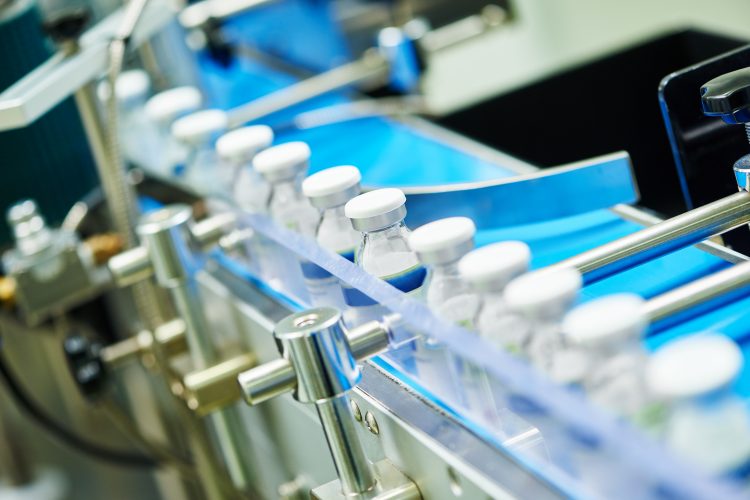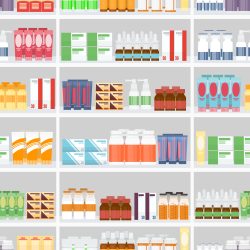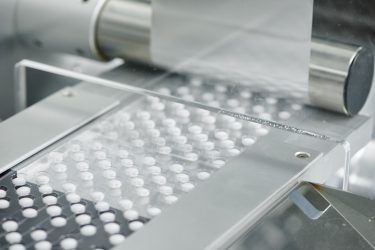Sterile and antiviral packaging: unlocking the potential of business continuity and resilience during COVID-19 pandemic
Posted: 6 May 2020 | Alice Ajit Mutum (market research writer at Future Market Insights), Ismail Sutaria (Senior Market Research Consultant at Future Market Insights) | 1 comment
Amid the disruptions due to COVID-19, companies providing sterile and antiviral packaging solutions look forward to opportunities arising from the concern over viral exposure itself. Regulatory compliance will play a significant role in the rapidly shifting risk terrain.


The COVID-19 pandemic has presented a humanitarian crisis, creating an extraordinary strain on society and affecting millions of people around the world. The speed and depth of disruption is creating unprecedented challenges for industries and is having a growing impact on the global economy. Beyond the negative impact of a traditional economic downturn due to factory closures, supply chain disruptions, movement restrictions and social distancing requirements, the pandemic has put the medical industry at the centre stage.


In the current scenario, the healthcare industry is witnessing an unparalleled demand for diagnostic tests, personal protective equipment (PPE), medical ventilators and other critical medical supplies. With potentially high risk of infection, healthcare professionals (HCPs) are also facing significant challenges in providing specific and effective care (often remotely). Hospital systems are becoming overwhelmed with the rapidly increasing number of COVID-19 patients, which is weighing heavily on the pharmaceutical industry. While research efforts to find effective drugs against the novel coronavirus are picking up pace, it is imperative to tackle another big challenge – ensuring the safety and security of drugs and medical supplies until they reach the hands of those who need them the most.
Many pharmaceutical companies remain focused on the immediate crisis – facilitating increased access to critical medicines and supporting HCPs, Intensive Care Units (ICUs), clinics, hospitals and patients in new ways. Overall, the COVID-19 pandemic has caused massive disruptions to the healthcare system. While pharma companies recognise and are responding to immediate needs, pharmaceutical packaging companies are experiencing a new set of challenges.
Packaging formats for pharma and food products: going sterile and antiviral
Prior to the pandemic, continued growth of the e-commerce industry in developing economies, increased interest in sustainable materials and the integration of advanced technology were driving the growth of the pharmaceutical packaging industry. However, it needs to be ready for potential effects triggered by the COVID-19 crisis. Demand for healthcare-based packaging, such as rigid plastic, pumps and flexible blister foils, is set to rise with the impending surge in need for critical medical supplies. On the other hand, growing anxiety about the transmission of COVID-19 through packaging surfaces is offering opportunities to capitalise on sterile formats.


As companies take steps to identify packaging categories that are likely to generate strong levels of demand and help maintain business continuity, sterile and antiviral packaging is set to emerge as an effective product during the pandemic. Amid increased demand for biologics and vaccines, packaging companies are increasing their investments in sterile formats, expanding production capacity and allowing for expedited turnaround.
The novel coronavirus is also increasing consumer anxiety, which is having a noticeable impact in the food packaging industry as well as pharmaceuticals . Mounting concerns over viral exposure and uncertainties about the virus’s ability to survive on surfaces for longer periods of time are potentially raising demand for new packaging formats that offer antibacterial and antiviral advantages. However, the use of sterile and antiviral packaging for pharmaceutical and biological products will continue to be a key value creator, as pharmaceutical companies face far more stringent packaging requirements than those placed on consumer packaged goods (CPG).
Cracking the sterilisation packaging code with cleanroom expansion and product innovation
Over the years, sterilisation packaging has evolved and increased in complexity, with a range of choices in materials, designs, features and applications. In the COVID-19 era, plastic is again emerging as the preferred material for sterile and antiviral packaging, contradicting recent trends towards lowering reliance on plastic and protecting the environment. In addition to versatility and high barrier properties, lowering oil prices during the pandemic are likely to ease the development of plastic products and packaging. While studies have indicated the advantages of using metal nanoparticles as antibacterial and antiviral agents, the commercialisation of these materials still appears to be limited by nanotoxicology concerns.
pharmaceutical manufacturers will continue to remain reliant on plastic for its high efficiency and barrier properties to be on the frontline of combating future outbreaks”
Anxiety around the avoidance of germs and other contaminants is generating a greater demand for safer products with higher integrity. Subsequently, R&D has been underway to offer added assurance and remove barriers to consumption. Expansion of cleanroom in compliance with the International Organizations for Standardization (ISO) is expected to support rapidly increasing packaging needs for sterile medical devices and kits during the pandemic.
Innovations are forthcoming for antibacterial and antiviral polymers and biopolymers for packaging. Antiviral biopolymers, in particular those reinforced with active drug elements, are expected to garner significant interest, as they are efficient, environment friendly and exhibit low toxicity. Demand for these materials will remain strong post-COVID-19, as consumer sentiment will become more concerned for reducing contamination risks and increasing safety in handling.
Revisiting prior M&A activities to support new demands
The changing regulatory scenario and evolving demands from pharmaceutical companies are compelling packaging and sterilisation suppliers to revise and update their offerings. In January 2020, Catalent, a leading global provider of medicines, clinical trial materials and health products, announced the purchase of Bristol-Myers Squibb’s facility in Anagni, Italy. The company aims to bring potential new customers to the site for oral solid biologics and sterile product manufacturing and packaging. Such a strategic move is expected to play a significant role during the pandemic, as it provides consumers with access to advanced sterile drug products and packaging.
A partnership between West Pharmaceutical Services – a provider of injectable drug delivery solutions – and SCHOTT – a primary packaging solutions provider – to combine the former’s Ready Pack system and SCHOTT iQ platform is allowing access to convenient, high-quality and easy-to-use sterile packaging products. Moreover, the combination of their products is set to deliver sterile packaging solutions in small volumes for developmental and clinical phases in smaller settings such as medical research institutes, universities and small companies.


As the pandemic continues to spread at a significant pace, especially in the US, the US Department of Health and Human Services (HHS) and ApiJect, an injectable medicine specialist, have set up an initiative called RAPID to create high-volume packaging made from medical-grade plastic for medicines and vaccines. The US Investment bank, Jefferies, has announced it will help to raise up to $1 billion in private capital to support the initiative and help ApiJect expand its blow-fill-seal (BFS) plastic manufacturing capacity.
Demand for sterile and antiviral packaging is expected to increase during the pandemic, especially as US health officials have tasked several companies, including Berkshire Sterile Manufacturing (BSM), to accelerate formulation and filling of injectable COVID-19 treatments to be used in clinical trials. Packaging manufacturers thus need to ramp up their production, as suppliers are facing numerous challenges in resuming operations and stocks have been in danger of running short.
NO2-based sterilisation technology emerging as a key product differentiator
In light of closures and potential closures of certain facilities that use conventional ethylene oxide (EtO) gas to sterilise medical devices prior to distribution and use, hospital and health systems have been putting emphasis on identifying and assessing alternative technologies. Commercial sterilisers are being hard-pressed to invest in nitrogen dioxide (NO2)-based sterilisation technology that offers the advantages of minimal pressure requirements, ultra-low temperature process, low or zero cytotoxic residuals and fast cycle times. The technology prevents the sterilant from reaching the pharmaceutical products by lowering concentration and residual levels during the process. Additionally, NO2 readily penetrates packaging and complex geometry.
Updates in ISO standards and regulatory requirements to impact decision making
Sterile and antiviral packaging systems need to ensure the sterility of their content before they are distributed and opened for use. The system must also be designed to ensure aseptic presentation at the point of use. Recent changes in the ISO standards for requirements of material, sterile barrier systems and packaging systems for terminally sterilised medical devices are set to help manufactures comply with European Union (EU) Medical Device Regulation (MDR) which will go into effect from May 2020.
In April 2019, ISO 11607-1:2006 was revised by ISO 11607-1:2019, which primarily stemmed from EU MDR stipulations that a packaging design must allow for easy and safe handling of products while preventing microbial contamination and packaging integrity must be clearly evident to the final user. Therefore, with increased technological and regulatory challenges, the correct selection of sterile and antiviral packaging is likely to be a crucial but a complex decision in the future.
Package labelling will continue to be a critical success factor. In addition to strict guidelines on the use of nontoxic permanent soft marking pens to keep the product integrity intact, sterile and antiviral packaging labels must include steriliser use, load number, date of sterilisation and expiration date at a minimum. Internal and external multi-parameter indicators are also emerging as a key to providing a high level of sterility assurance.
What lies ahead of the COVID-19 pandemic?
Nationwide lockdowns, strict border controls and stock market turbulence triggered by COVID-19 are currently taking a toll on the pharmaceutical industry, and the sterile and antiviral packaging in particular. Stakeholders are thus rethinking their growth strategies and looking to relocate their supply chains away from China – the first epicentre of the coronavirus outbreak.
Sustainability has been one of the prominent trends in the packaging industry and many companies have switched to eco-friendly alternatives. While a trend of removing unnecessary packaging emerged in the fresh produce space, pharmaceutical manufacturers will continue to remain reliant on plastic for its high efficiency and barrier properties to be on the frontline of combating future outbreaks.
About the authors


Ismail Sutaria (author) is an experienced Senior Market Research Consultant at Future Market Insights for Packaging and Materials Domain. Ismail has authored several complex market research projects in packaging, materials and consumer goods domain. Insights presented in the article are based on the findings of Future Market Insights’ extensive research on Sterile and Antiviral Packaging Market.


Related topics
Aseptic Processing, Big Pharma, Cleanrooms, Industry Insight, Packaging, QA/QC, Research & Development (R&D), Sustainability, Viruses
Related organisations
ApiJect, Berkshire Sterile Manufacturing (BSM), Bristol-Myers Squibb (BMS), Catalent, Future Market Insights, International Organizations for Standardization (ISO), SCHOTT Pharmaceutical Systems, US Department of Health and Human Services (HHS), West Pharmaceutical Services










A best-in-class Cloud serialization and traceability solution should use multiple standard data exchange protocols, exchange patterns, data security, and data integrity techniques.